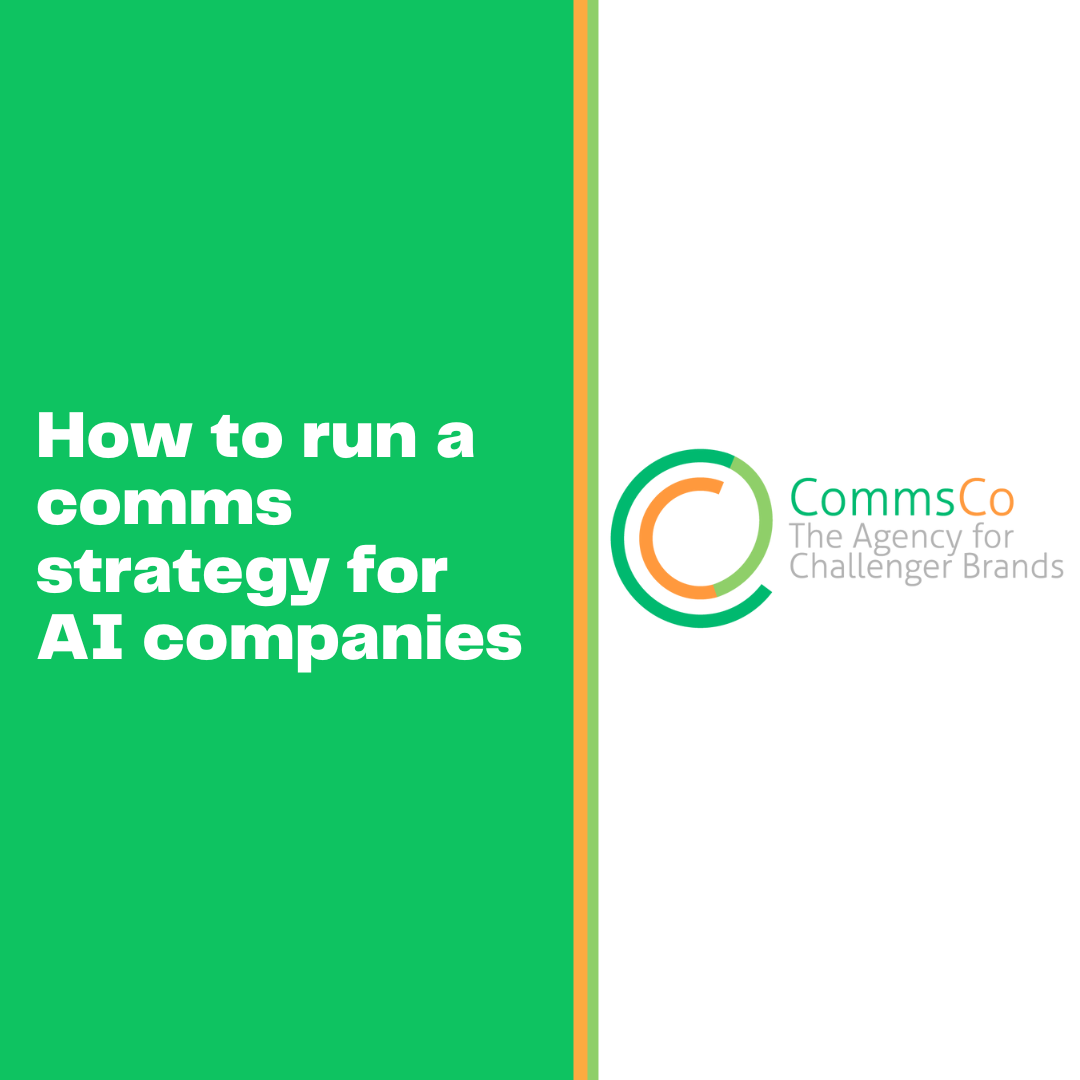With fear-mongering stories like this appearing in the news now, on almost a daily basis, you could be mistaken for thinking it’s an easy job to get your AI solutions communicated to the media. The danger is right now the media is saturated with news on artificial intelligence, both negative and positive, with the former dominating the last few weeks.
So as an AI innovator, how do you get a handle on your own comms given the noise in the media at the moment? Here are just five pillars we suggest you may need to consider for your AI PR comms strategy. Using them as a starting point should build you a solid foundation.
Place thought leadership
If you’re in AI, chances are you have some very clever people working at the top of your organisation. You may not have customers (yet) but your best asset is your leadership. Also, they know the reason your business exists, so this is an important aspect of any AI campaign. Not only is it time-consuming for your team to write pieces, but you need external placement of them in relevant industry publications to grow awareness. Otherwise you could have a brilliant story but it will be hidden in your own website. These articles can be plotted out in a calendar as a key ongoing contingent to your comms across the year.
Position your founders
In a similar theme, your people are your assets, so should be interviewed for both interesting views but also experience. Thoughts on the industry and comments on the media agenda can keep your brand in the press and the interest for your organisation maintained. We recently started working with AI consultancy Bayezian, and given its tech and product neutrality, we’ve found outbound media pitches to be snapped up by journalists looking for independent comment.
If you’re a larger organisation, you can look to own certain hot topics and you might find a roundtable has strong interest from journalists. Plus once you gain traction you have quality content and placements from established outlets to share on your personal channels to your network.
Survey your market
If you are keen to own issues in the market, a good place to start gleaning opinion and finding endorsement for them is by surveying your audience. Ethical AI is at the forefront of media this year, but what might your take on it be? Decide your niche, and find data that underlines the need for it. A poll of 250 of your main decision-makers will be enough for this if the topic is strong enough. The survey can be used in many ways, firstly for PR headlines, but then as a report download and visual for your website and channels. Parts of it should be used to draft articles as per point 1, it should have many uses to maximise investment.
Consider awards
Awards are the ‘marmite’ of founders and marketers, either they can’t enter enough of them or they are an utter waste of time. That said, there are a lot of AI awards out there (e.g DataIQ awards / UK IT Industry Awards) and you just need to understand the dos and don’ts of award submission. Once successful you do need to assume you’re going to attend – and use the shortlisting or win as a tag for your website and your email signature. In fact you can build a whole campaign around one award as well. It’s great recognition for a smaller brand (that may not have customers) but a fantastic technology.
Have a crisis strategy
Most customer facing organisations should have a crisis strategy and team in place, though I’d wager that most (at least small companies) don’t. In AI this need is heightened, given the anti-human element to the story and the media at large. You should probably have a stance on how AI may kill off jobs or even kill people, which brings us back to the start of this article. It’s worth being well researched on the trends and positives coming from advances in this technology to build into your statements.
So embrace the media as a friend, get creative and be prepared. This is an exciting time for AI and done well, you can steal the media mindshare.
For examples on how a comms strategy can help your company, you’re welcome to check out our case studies here.
Related Articles



